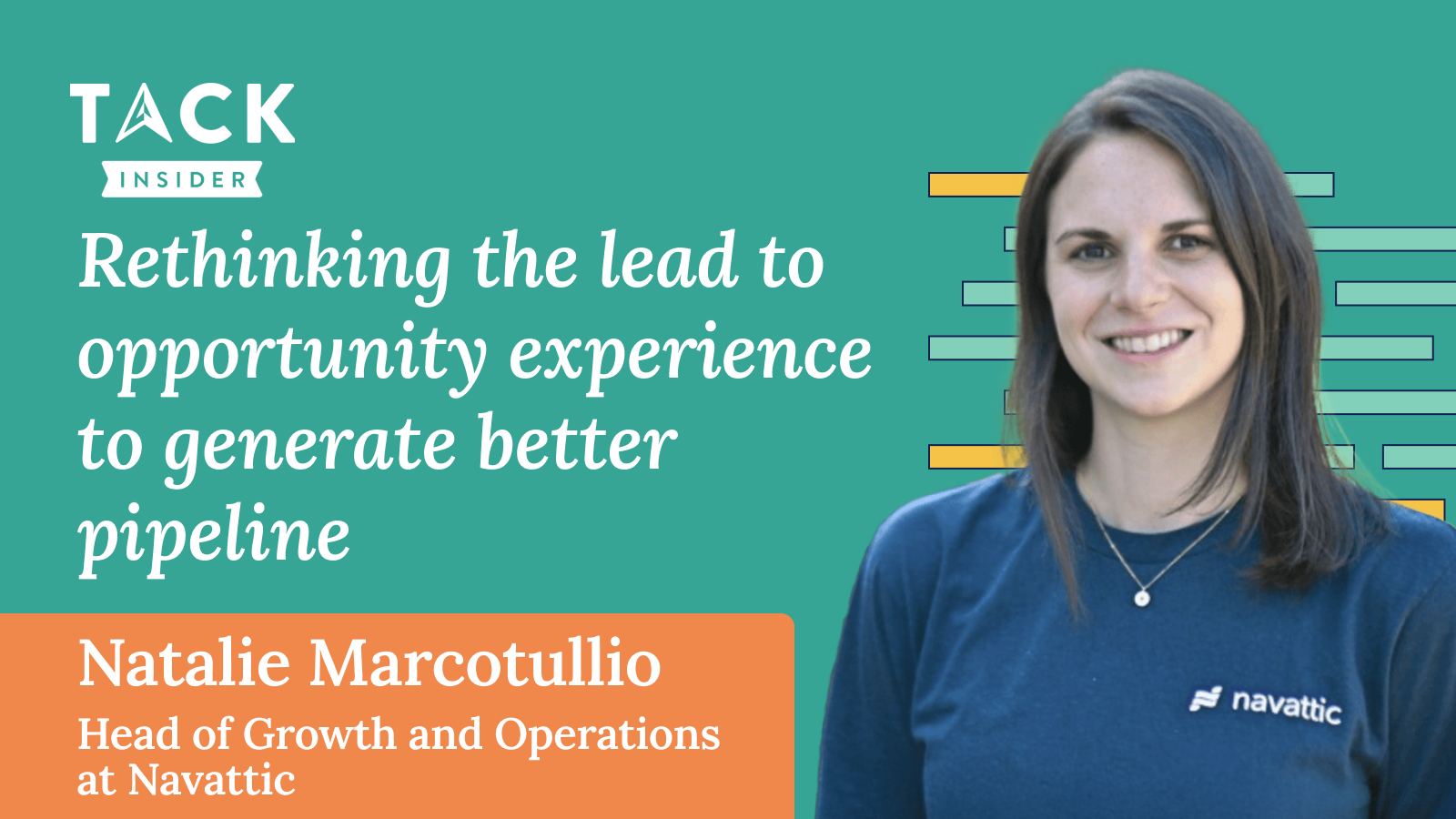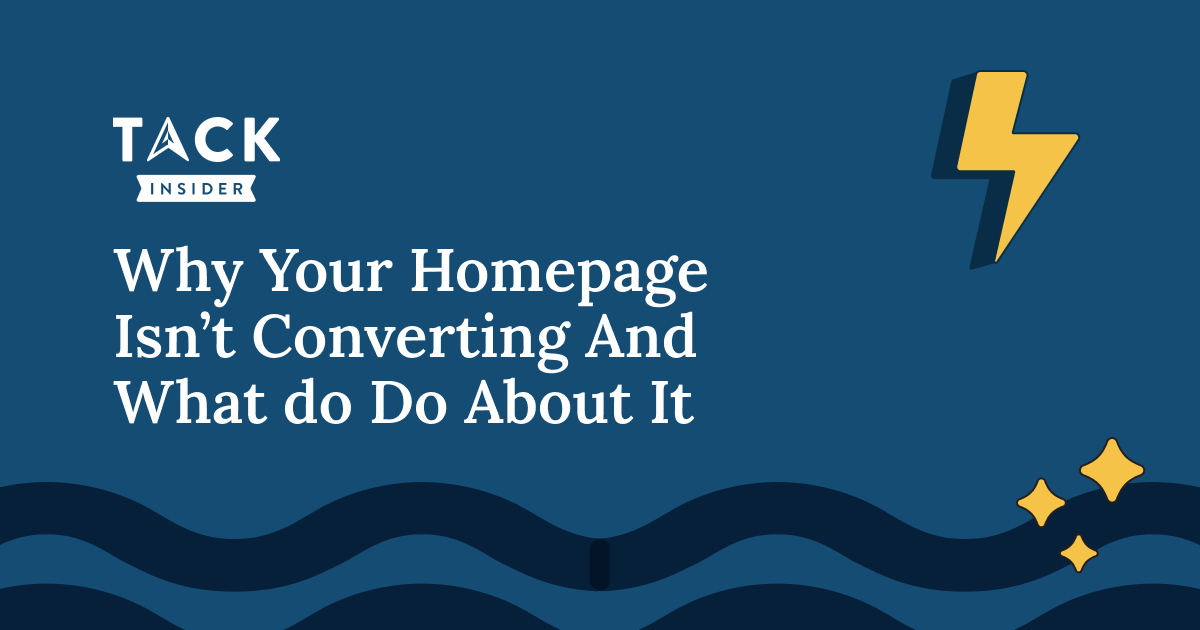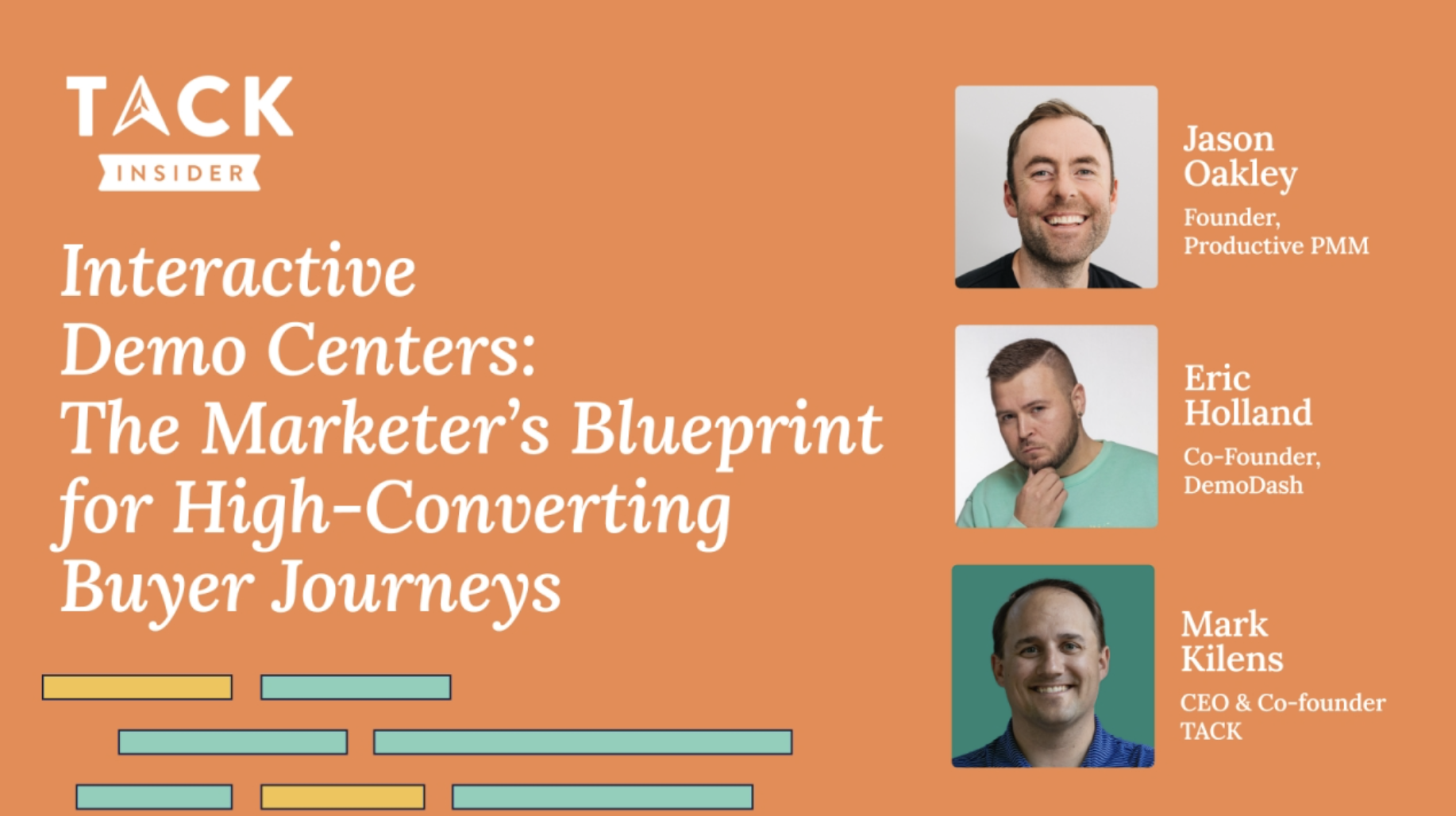Hosted by: Mark Kilens, CEO & Founder at TACK
Speakers: Natalie Marcotullio, Head of Growth & Operations, Navattic
Overview
Most B2B lead-to-opportunity journeys are still built around a company-first mindset: gated forms, long qualification cycles, and demo calls that aren’t really demos. Drawing from original research on 100 leading SaaS companies and lessons from her own work as Head of Growth, Natalie shared clear, actionable ways to rethink the experience, from first click to qualified opportunity.
Here are the key shifts B2B marketers, founders, and product teams can start making right now to create a faster, more human buyer experience.
Check out the full slides of the webinar
1. Fix the “Book a Demo” Mismatch
A core issue Natalie identified is that most “Book a Demo” CTAs are misnomers. Her research found that 91% of the time, clicking “Book a Demo” leads not to a product demo, but to a discovery call.
This erodes trust from the outset.
Key problems with the current flow:
- Buyers are promised a demo but get a qualification call.
- 20% of demo requests (via email) received no follow-up at all.
- Slow responses are still common—though automation is improving speed.
Fix it:
- Use calendar links in follow-up emails, even if not on the website.
- Send instant automated replies that confirm the request and offer helpful resources.
- If discovery is needed, be transparent about it up front.
“The first call doesn’t need to be an interrogation—automate the un-human parts so humans can actually connect.”
2. Use Interactive Demos to Pre-Qualify and Accelerate
Interactive demos are gaining traction—not just as marketing tools, but as qualifiers. In Novatic’s latest research, the number of top SaaS websites using interactive demos nearly doubled year over year (from 17% to 31%).
Where interactive demos help most:
- On product pages, as a secondary CTA to “Book a Demo”
- In outbound sequences, especially as a final touchpoint
- In campaigns to signal buyer intent based on what they explore
Interactive demos act like an appetizer—not a full meal. Keep them under 12 steps. Let buyers explore just enough to know if they want to learn more.
3. Set Expectations Around Pricing (Even If You’re Not Ready to Show It All)
Pricing transparency is one of the most debated topics in B2B sales. In Natalie’s study:
- 70% of top SaaS companies had a pricing page.
- Only 54% actually listed pricing on that page.
- Some listed tiers but no numbers—frustrating and confusing for buyers.
What to do instead:
- Share starting prices or ranges, if exact pricing is too variable.
- Mention in your follow-up email or call that pricing will be discussed.
- Use pricing pages as negotiation anchors, not hurdles.
Hiding pricing doesn’t protect you—it slows you down and introduces friction for buyers and reps alike.
4. Qualify Before the Call (Without Creating Homework)
Some companies try qualifying leads via email by sending a list of questions. While well-intentioned, this can feel like a chore to prospects.
Better approaches:
- Limit qualification questions to 2–3.
- Use clickable buttons or multiple choice options in the email.
- Rely on tools like Clearbit for enrichment to reduce what you ask manually.
Even better: use demo behavior and engagement data to qualify prospects silently and asynchronously.
5. Crawl, Walk, Run: Build Internal Buy-In Gradually
You don’t need to rip out your sales process overnight. In fact, Natalie emphasized that the best internal change happens incrementally.
Try this staged rollout:
- Level 1: Add automation to demo request responses. Share resources and reassure buyers.
- Level 2: Include a calendar link in SDR outreach emails.
- Level 3: Show interactive demos or pricing previews directly on your site.
As you test and gather performance data (e.g. time-to-op, MQL-to-SQL conversion), you’ll have a stronger case for broader changes.
Pull Quote
“The old playbook assumes the product is the carrot at the end of the funnel. But buyers don’t want to be led—they want to explore.”
Key Takeaways
- Most buyers don’t trust the demo promise—be transparent and responsive early.
- Use interactive demos to surface intent and personalize outreach.
- Show pricing—or at least expectations—to reduce wasted time.
- Shift some qualification to async or automated paths.
- Evolve your process gradually with crawl-walk-run changes.





